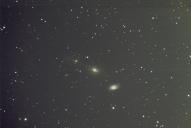Howdy, Stranger!
It looks like you're new here. If you want to get involved, click one of these buttons!
In this Discussion
PhotometricColorCalibration fails, ASTAP doesn't
I have images of M57 that all work for PCC.
My images for M77 and NGC2986 fail for PCC, but work for ASTAP.
PCC claims my image of NGC2986 needs six stars and can only find 5.
I get the same error whether I work with the master light or a single debayered image.
I tried using GDR2, GDR3, and UCAC3.
ASTAP is using G18.
How do I change the settings in PCC to make this work?
(Master Light for NGC2986 attached)


NGC2986_RGB.jpg
3018 x 2018 - 6M

Comments